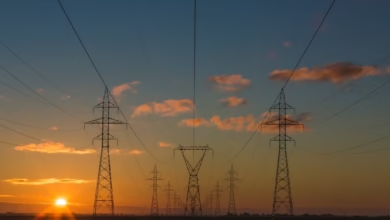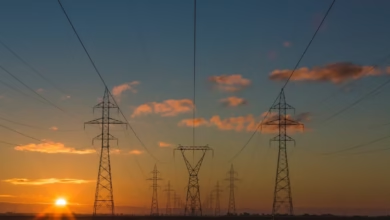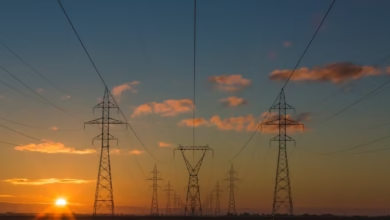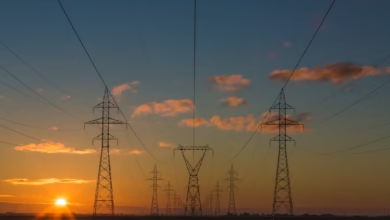Navigating Global Energy Trade: The Future of Exports and Imports in a Renewables-Driven Market
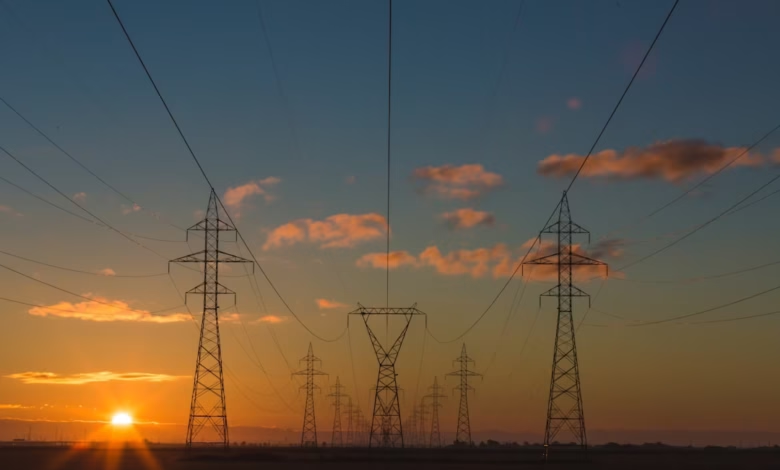
In an era characterized by rapid technological advancements and pressing environmental challenges, the global trade of energy resources has never been more critical. Energy exports and imports shape the dynamics of energy markets, influencing everything from energy security to economic stability. As countries strive to balance their energy policies between renewable energy and fossil fuels, the landscape of global energy trade is evolving. The transition toward green energy sources, such as solar power, wind energy, and hydropower, is gaining momentum while innovations in energy storage and transportation are revolutionizing how we think about energy efficiency and sustainability.
This article delves into the complexities of energy trade in today’s world, examining the interplay between traditional energy sources like fossil fuels and nuclear energy, alongside the rise of renewable alternatives. We will explore how energy investments and cutting-edge R&D are driving developments in energy innovations, including carbon capture technologies and smart grids. By understanding the emerging global energy trends and the pivotal role of distributed energy systems, we can better appreciate the future of energy exports and imports as they contribute to a more sustainable and resilient energy economy. Join us as we navigate the intricacies of this critical topic, highlighting the importance of energy in shaping our collective response to climate change and the ongoing energy transition.
- 1. The Dynamics of Global Energy Trade: Navigating Energy Exports and Imports in a Changing Landscape
- 2. The Role of Renewable Energy and Fossil Fuels in Energy Markets: Balancing Transition and Security
- 3. Innovations in Energy Storage and Transportation: Driving the Future of Energy Efficiency and Sustainability
1. The Dynamics of Global Energy Trade: Navigating Energy Exports and Imports in a Changing Landscape
The global trade of energy resources is undergoing significant transformation due to various factors, including technological advancements, shifting energy policies, and increasing concerns about climate change. As nations strive for energy security and sustainability, the dynamics of energy exports and imports are evolving, leading to a more interconnected and diversified energy landscape.
One of the most prominent trends in the global energy market is the transition from fossil fuels to renewable energy sources. Countries are investing heavily in solar power, wind energy, hydropower, and bioenergy to reduce their carbon footprint and enhance energy efficiency. This shift is not only driven by environmental concerns but also by the need for energy security. Nations are diversifying their energy imports to include green energy sources, mitigating their reliance on fossil fuels, and decreasing vulnerability to global market fluctuations.
Energy storage technologies are becoming increasingly vital in this transition, enabling countries to manage intermittent energy production from renewable sources. Innovations in energy storage help balance supply and demand, ensuring a stable energy supply while making it feasible to export and import renewable energy across borders. As smart grids and distributed energy systems gain traction, the efficiency of energy transportation improves, facilitating the trade of both renewable and thermal energy.
The global energy trade is also influenced by energy economics and investment patterns. Countries rich in fossil fuels are adapting their energy policies to align with global energy trends, exploring investments in carbon capture technologies and hydrogen energy production. These innovations not only support their domestic energy markets but also create opportunities for energy exports to nations looking to achieve their climate goals.
Moreover, the rise of electric vehicles and the associated need for charging infrastructure is reshaping energy markets. Countries are increasingly looking to integrate renewable energy sources into their transportation sectors, further driving the demand for energy imports that align with their sustainability objectives.
As the energy landscape continues to evolve, the dynamics of global energy trade will be characterized by a balance between traditional energy exports and the growing importance of renewable energy. The interplay between energy policy, investment, and innovation will guide nations in navigating this complex terrain, ultimately contributing to a more sustainable and resilient future in the face of climate change.
References:
– International Energy Agency. (2023). Global Energy Review 2023. Retrieved from [link]
– World Bank. (2023). Energy Transition and Its Implications for Global Trade. Retrieved from [link]
– U.S. Energy Information Administration. (2023). Energy Production and Consumption. Retrieved from [link]
2. The Role of Renewable Energy and Fossil Fuels in Energy Markets: Balancing Transition and Security
The global energy markets are currently navigating a complex landscape where renewable energy and fossil fuels coexist, both playing significant roles in shaping energy policy and security. As countries strive for energy transition to combat climate change, the competition between traditional energy sources and greener alternatives becomes increasingly pronounced.
Renewable energy sources such as solar power, wind energy, hydropower, and bioenergy are becoming dominant players in energy markets. These resources are essential for reducing reliance on fossil fuels and ensuring long-term sustainability. The integration of renewable energy into existing energy systems not only addresses environmental concerns but also enhances energy efficiency and security. For instance, the development of energy storage solutions and smart grids facilitates the management of renewable energy supply, overcoming intermittency issues and allowing for a more reliable energy distribution system.
However, fossil fuels continue to play a crucial role in the energy landscape, particularly in the short to medium term. Countries with abundant fossil fuel reserves often leverage energy exports to bolster their economies, while simultaneously investing in carbon capture technologies to mitigate environmental impacts. This balancing act is vital for maintaining energy security as nations transition to lower-carbon energy systems. The role of thermal energy remains significant, especially in regions where renewable energy infrastructure is still developing.
Nuclear energy also contributes to the mix, providing a stable and low-carbon alternative that complements intermittent renewable sources. The rise of hydrogen energy as a potential future energy carrier is another innovation that could reshape energy markets by enabling energy storage and transportation, thus facilitating the transition to a more sustainable energy economy.
The interplay between energy imports and exports is influenced by global energy trends and investments in energy R&D. As nations prioritize distributed energy systems and offshore energy projects, the dynamics of energy trade evolve. Energy economics dictate that the most efficient and secure energy solutions will prevail, leading to a gradual but steady shift towards green energy.
In summary, the transition to renewable energy is critical for addressing climate change and ensuring energy security. However, a balanced approach that incorporates fossil fuels, nuclear energy, and innovative technologies will be essential for a smooth transition in energy markets. As countries navigate these changes, they must develop robust energy policies that promote sustainability while safeguarding economic interests.
3. Innovations in Energy Storage and Transportation: Driving the Future of Energy Efficiency and Sustainability
The global energy landscape is rapidly evolving, driven by innovative technologies in energy storage and transportation that enhance energy efficiency and sustainability. As nations transition from fossil fuels to renewable energy sources, the need for effective energy storage solutions becomes paramount. The ability to store energy enables a more reliable supply for fluctuating energy markets, especially as we integrate solar power and wind energy into our grids.
One of the most promising innovations in energy storage is battery technology, particularly lithium-ion and solid-state batteries. These advancements not only improve the efficiency of electric vehicles but also support the broader deployment of distributed energy systems. By storing excess energy generated during peak production periods, we can ensure a consistent energy supply even when renewable sources are not generating electricity. This capability is crucial for energy security and plays a significant role in the energy transition.
Furthermore, the development of thermal energy storage systems allows for the effective capture and use of excess heat generated by industrial processes and power plants. Coupled with carbon capture technologies, these systems can reduce greenhouse gas emissions, making a significant impact in the fight against climate change. Energy investments in such technologies are essential to create a sustainable energy economy capable of meeting future demand.
Innovations in energy transportation, such as smart grids and hydrogen energy systems, are also transforming how energy is distributed and utilized. Smart grids enhance the efficiency of energy delivery, enabling better management of resources and reducing energy losses. Hydrogen energy, particularly when produced from renewable sources through electrolysis, serves as a versatile energy carrier that can replace fossil fuels in various applications, including transportation and heating.
As countries strive to meet their energy policy goals and address global energy trends, the focus on offshore energy resources, such as wind and hydropower, is increasing. These innovations in energy production and transportation are not only vital for enhancing energy efficiency but also for securing a sustainable energy future. By investing in research and development (R&D) for these technologies, we can pave the way for a resilient energy market that prioritizes green energy and supports the global transition toward cleaner energy sources.
In summary, the synergy between energy storage and transportation innovations is crucial for driving energy efficiency and sustainability. As we continue to navigate the complexities of energy imports and exports, these advancements will play a critical role in shaping a low-carbon future and addressing the challenges posed by climate change.
In conclusion, the global trade of energy resources is a complex and dynamic landscape that is continuously evolving in response to changing geopolitical, economic, and environmental factors. As we navigate the intricacies of energy exports and imports, it becomes increasingly clear that both renewable energy and fossil fuels play pivotal roles in shaping energy markets and ensuring energy security. The ongoing energy transition underscores the need for innovation in energy storage, transportation, and efficiency, which are critical to optimizing resources and minimizing our ecological footprint.
As countries strive to meet their energy needs while addressing climate change, the integration of smart grids and advanced technologies such as carbon capture and hydrogen energy becomes essential. Moreover, energy investments in emerging sectors like offshore energy, solar power, and wind energy are crucial for promoting a sustainable future. The interplay between energy policy and global energy trends will shape the trajectory of energy economics, influencing everything from bioenergy to hydropower.
Ultimately, embracing energy innovations while balancing the demands of traditional energy sources is vital for a resilient energy landscape. With ongoing research and development, we can enhance energy efficiency and facilitate the shift toward greener alternatives, paving the way for a more sustainable and secure energy future. As stakeholders in the energy sector, it is our collective responsibility to foster advancements that support this transition, ensuring that both current and future generations benefit from a well-managed and diversified energy portfolio.
References:
[Include relevant sources here]
